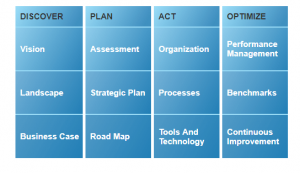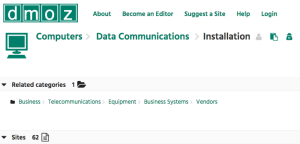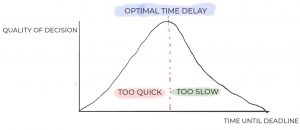
You already made a big investment in website design. You feel like you tackled that project and got it done. But be honest: It’s been a few years now, hasn’t it? Good web design isn’t something you can invest in once and be done. Every business website needs an update now and then, and yours might be due.
To determine if it’s time to invest in a website redesign project, consider these four key metrics.
1. Low search traffic
Your overall website traffic is an important metric, but with nearly 81 percent of B2B purchase cycles starting with web search, a lot of your visibility on the web is tied up in how easily people can find you via search engines. If the amount of traffic your website is receiving from search sources (that means mostly Google) has dropped far below what you saw in previous years or is on a consistent decline, then your website may not be properly optimized for search.

While there’s more to SEO than proper website optimization, you can control some of the factors that help (or hurt) you most in the search engines on your own website. If your last website design project didn’t make SEO a priority—or even if it did, but the methods used at that time have become outdated due to algorithm updates—a website redesign project with a proper focus on keyword research and user experience can help you improve the on-site factors that are important to getting your website higher up in the search rankings.
2. High bounce rates
Your search traffic can be great, but if the people who make it to your website don’t stick around, it won’t matter much. Your bounce rate is the percentage of visitors who don’t bother staying on the website for long once they click through to it.
Figuring out if your bounce rate is high or not can be challenging if you don’t have an idea of what’s normal. While there’s a lot of variety across websites, if your bounce rate is above 55 percent you’re above average and you should start considering why most of your visitors are leaving.
A number of issues can cause a high bounce rate: slow load times, an unintuitive design that makes it hard for visitors to find the information they need, a sloppy or unprofessional look to the website, or content that’s irrelevant to the people who click through to your site, just to name a few possibilities.
All of these possible reasons amount to the same thing, though: If your visitors are leaving soon after they show up, your website isn’t doing its job. It’s worth analyzing the reasons why and taking on a website redesign that addresses them.
3. High bounce rates on mobile
Over half of all Google searches are performed on mobile devices, and almost a third of all the shopping people do online is done on mobile. If your website isn’t mobile-friendly, then you’re missing out on a big audience.
Just as high bounce rates on desktop tell you your website isn’t doing its job, high bounce rates on mobile signal that the mobile version of your website isn’t providing a useful or intuitive enough experience to make visitors want to hang around.
Any website redesign project today should make mobile design a top priority. Not everyone was thinking that way even just a few years ago, so if your last website design happened before mobile became the game changer it’s become, then it’s time to revisit your website’s design with an eye toward making it work for mobile users as well.
4. Low conversion rates
Your website has one clear, overall goal: help your business make more sales. Each page should have its own goal as well—those can vary from getting visitors to click through to another page, join your email list, contact you or make a purchase.
Whatever your goal for each page is, you can review your conversion tracking in Google Analytics or your goals in HubSpot to get a clear picture of how well your website is meeting those goals.
This is the goal that all of those other metrics are leading up to. If you get plenty of traffic, and even if that traffic stays on your website for a while after clicking through, if those visitors don’t convert you have a problem. Low conversion rates tell you that your website, as is, simply isn’t doing its main job.
A comprehensive website redesign project includes improving your personas, so your website is better designed to attract the specific people most likely to be your customers. It also gives you a chance to improve your CTAs, so your whole website is better designed to drive people to take the actions you want them to take for you to meet your goals.
Visitors who don’t convert aren’t helping you meet your bottom line, and if a high proportion of the people coming to your website fall into that category, it’s time for a refresh.
Your website may have been exactly what you needed back when you last designed it, but as user behavior has changed and our ability to track what’s working has grown more sophisticated, you have an opportunity now to present a fresh face to the online world that better meets modern needs and gets you the results you want from a website.
Digital & Social Articles on Business 2 Community
(34)
Report Post






